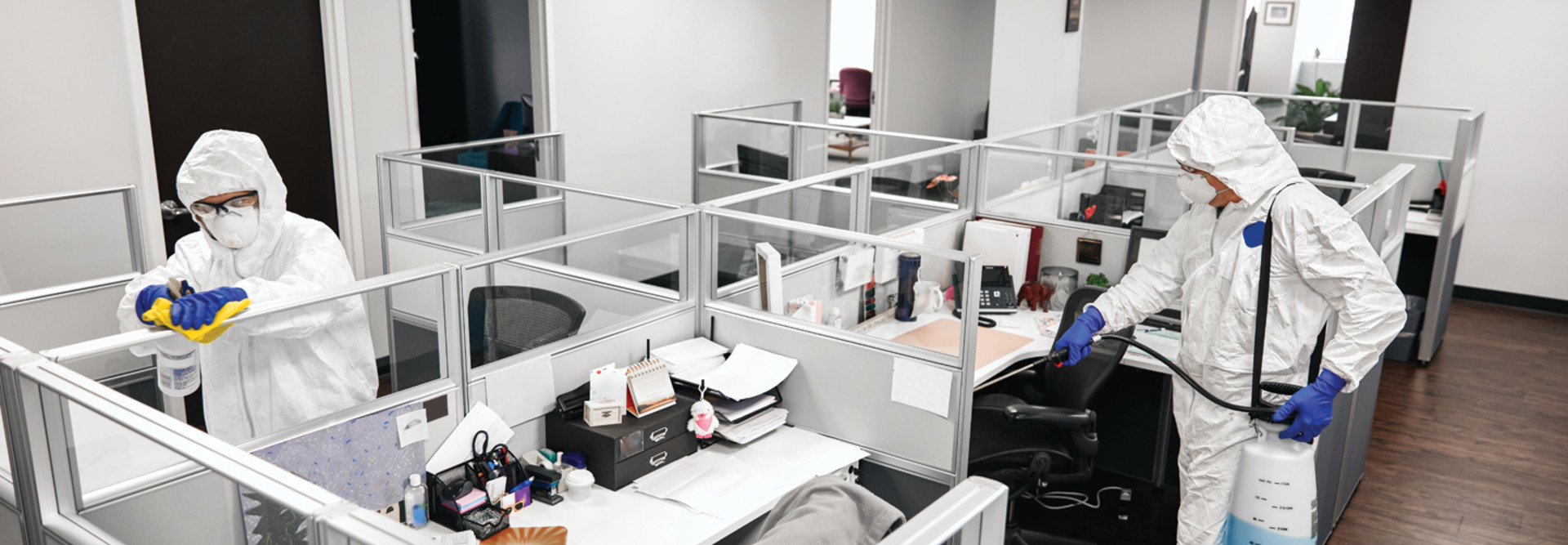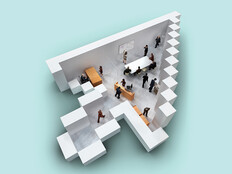Government Guidelines on Disinfecting IT Gear
Germs and viruses can spread when a user touches something that is contaminated and then touches his or her eyes, nose or mouth, the Department of Homeland Security notes in guidance on disinfecting workplaces: “Droplets from a cough or sneeze of an infected person move through the air and carry viruses with them. A person can become infected by touching a surface where these droplets land before touching their eyes, mouth or nose. Frequent hand washing prevents virus transmission from infected surfaces.”
“Work surfaces that should be cleaned and disinfected regularly include telephones, computer equipment, and other frequently touched surfaces. Be sure that any cleaner you use is safe to use and will not damage office equipment,” the GSA states. “Use only disinfectants registered by the U.S. Environmental Protection Agency (EPA), and follow all directions and safety precautions indicated on the label.”
As the GSA notes, the CDC recommends “disinfecting agency-owned personal property such as desks, workstations, computer accessories, and phones.”
Individual agencies are responsible for “procuring and providing services and/or products to clean and disinfect these items as desired.” Such services are also available from the GSA on a reimbursable basis, upon request.
According to the CDC, for devices such as tablets, touch screens and keyboards, the IT leaders should consider putting a wipeable cover on electronics and follow the manufacturer’s instruction for cleaning and disinfecting. If there is no guidance, users should “use alcohol-based wipes or sprays containing at least 70% alcohol” and dry surfaces thoroughly.
Ogbonnaya Omenka, a public health expert and assistant professor at Butler University, tells USA Today that ideally, “deep cleaning” of offices involves cleaning and disinfecting.
That means specialized teams equipped with appropriate gear, including masks, personal protective equipment and even hazmat suits, the newspaper reports. Such cleaning also requires the use of chemicals capable of killing a virus and fogging equipment.
Digital Aerolus says its Aertos 120-UVC Drone combines an industrial drone platform with "verified UVC disinfection capabilities to reduce health risks for humans.”
“If proper measures are taken, the cleaners should be protected from the infection while preventing its spread,” Omenka says.
John Thomas, the acting assistant commissioner of GSA’s Office of Leasing, says that the agency will work with its facility management staff to ensure federal office cleaning meets the standards in the lease amendment, according to Federal News Network.
“It is kind of a difficult thing to address. You see if there’s trash in a wastebasket, if it’s overflowing from the trash basket. For disinfecting, you might look at two surfaces [and] one’s disinfected, the other one’s not, and you might not be able to tell the difference. But certainly, we are working with our facility management employees to address a process for oversight for this,” Thomas said last week in a webinar hosted by the National Federal Development Association.
READ MORE: Find out how to make telework a success for your agency.
How Drones with UV Lights Can Kill Viruses
In addition to traditional methods of disinfecting offices and IT equipment, another possible solution is UVC light, which has long been used to keep viruses and other pathogens off surfaces. UVC light disrupts the DNA of harmful microorganisms and destroys their ability to reproduce. UVC light emitted in the wavelength range centered around 265 nanometers is generally considered the standard for effective UVC disinfection.
One company that has been promoting such a solution to combat COVID-19 is Digital Aerolus, whose Aertos 120-UVC Drone “combines a proven industrial drone platform with verified UVC disinfection capabilities to reduce health risks for humans,” according to the company.
“Digital Aerolus’ industrial drones do not require GPS or external sensors to fly indoors, enabling drones to operate stably in places other drones cannot go, including small and confined spaces,” Robotics Tomorrow reports. Since exposure to UVC light is harmful to humans, the drone can be piloted from afar, allowing users to “rapidly deploy disinfection tactics remotely, without putting humans at risk,” the publication notes.
Jameson Huckaba, director of product and business development at Digital Aerolus, tells CNET that the drone can generally disinfect up 1,000 cubic feet in about 10 minutes of flight.











